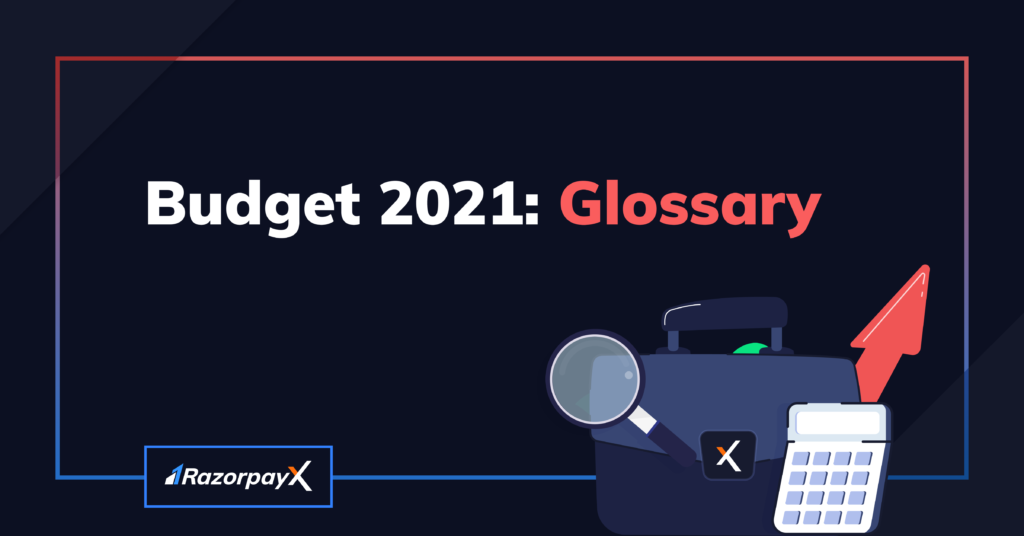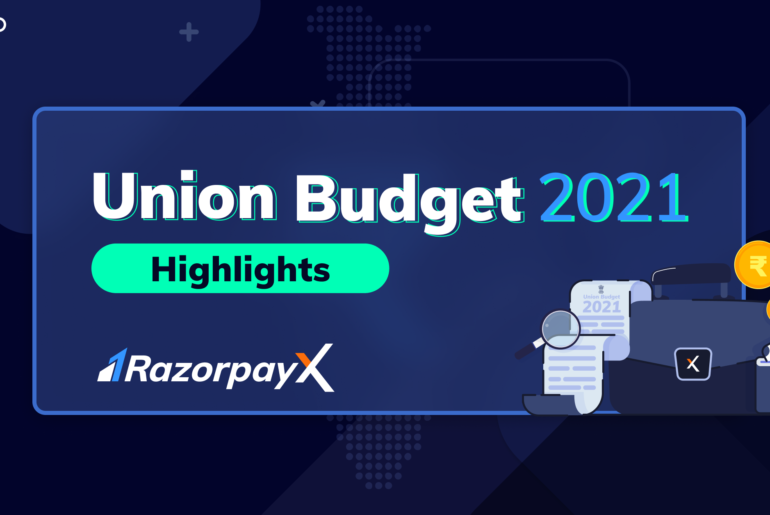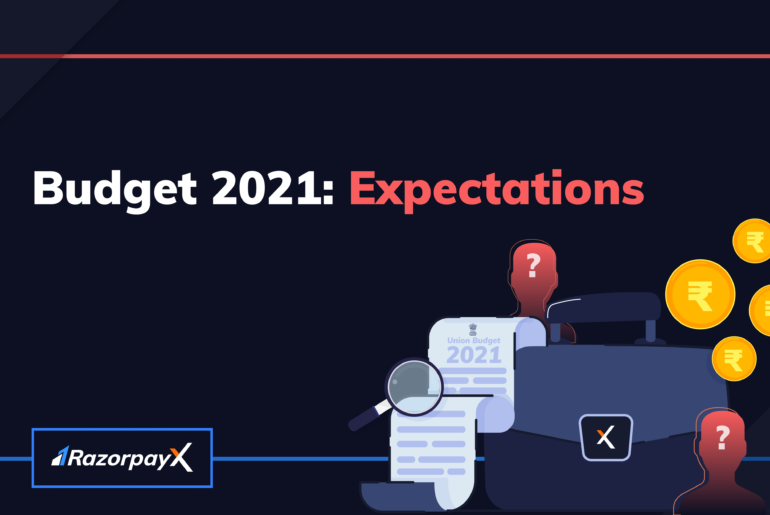The Union Budget, also referred to as the Annual Financial Statement is an account of the estimated receipts and expenditure of the government for a fiscal year. It is one of the most anticipated events in the year and is viewed by millions of people around the country.
The government of India proposes the Union Budget on the 1st of February of every year before the new financial year begins in April.
For the first time in the history of India, the Union Budget is going to be announced paperless.
Finance Minister Nirmala Sitharaman is all set to announce amendments that look to steer SMEs & startups and drive economic growth after the COVID-19 pandemic.
Here’s a breakdown of all the terms you should be up to speed with before the Union Budget 2021 is announced.
Direct Taxes:
These are taxes that are paid directly to the government by individuals and corporations. These taxes include corporate tax, income tax, personal property tax, real property tax, etc.
Indirect Taxes:
These taxes are paid by consumers when they purchase goods and services. Examples of indirect taxes include excise tax, and GST.
Finance Bill:
It is a bill presented to the Parliament after the Union Budget. The bill states the legal amendments detailing the various laws about tax, including alteration, termination, imposition and regulation of tax proposals made in the Union Budget.
Fiscal deficit:
This marks the difference between revenue and expenditure of the government. It is calculated as the percentage of the country’s GDP or as the total money spent by the government over its income.
Revenue Deficit:
When the government’s total revenue expenditure exceeds the total revenue receipts, a revenue deficit is observed. It is calculated as the difference between the total revenue expenditure and total revenue receipts.
Minimum Alternative Tax (MAT):
MAT is a minimum tax that every company, including foreign companies, are liable to pay to the government, even if they fall under zero tax limits. This is applicable when the taxable income, calculated according to the I-T Act provisions is less than 15.5 % (plus cess and surcharge) of the profit under the Companies Act, 2013.
Gross domestic product (GDP):
Total market or output value of the final goods and services produced by various sectors within the country in a specified time period, generally a year.
Vote on Account:
Article 116 of the Indian Constitution defines vote on account as the interim advance grant given to the central government as part of a financial year budget. This is an estimated expenditure, pending the finalisation of the Demand for Grants and the passing of the Appropriation Act.
Tax revenue:
The primary source of income gained by the government through taxation. This includes both direct and indirect taxes.
Non-Tax revenue:
The income earned by the government apart from taxation. This includes bills that citizens pay for services by the government, interests collected by the government on loans or funds offered to states etc.
Capital Expenditure:
The expenditure over creating fixed assets such as highways, buildings etc. and the loans given to states by the central government.
Revenue Expenditure:
The expenditure for the daily business operations such as subsidies & are not used exclusively to build an asset.
Excess Grant:
If the total expenditure exceeds the original allocated grant & supplementary grant expenditure, the excess is required to be approved in the form of Excess Grant from the parliament.
Budget Estimates:
This constitutes the money allocated for specific schemes or to any ministry for the upcoming financial year.
Revised Estimates:
Mid-year estimates of possible government expenditure. These are not voted by the Parliament and merely is an estimate of how the government’s expenditure is most likely to pan out.
Inflation:
The situation where prices of the goods and services increases and purchasing value of money fall in an economy. Inflation results in an increase in the cost of living as the prices of general commodities such as clothing, food, fuel, transport etc. increases.
Disinvestment:
When the government sells or liquidates any of its assets or subsidiary (all or part of it). The primary objective of disinvestment is to increase the return of investment (ROI) on labour, infrastructure and capital goods.
Cess:
An additional tax imposed on the basic tax amount. Generally, the government introduces cess to meet specific expenditure. For example, a secondary and higher education cess of 1% was imposed in Budget 2020 to finance secondary and higher education in India.
Financial Inclusion:
Access to basic financial services (a bank account, adequate credit, subsidised loans) at an affordable cost. Generally, financial institutions don’t cater to low-income groups. Financial inclusion aims to bridge this gap by providing financial services at an economical cost.
Subvention
A grant of money or aid provided by the government. For instance, the government might provide interest subvention for loans provided to the farmers.
Union Budget 2021 is promised as a ‘never before’ Budget by Finance Minister Nirmala Sitharaman. Some of the key expectations from this Budget include Tax benefits for startups, simplification of GST, rebates for MSMEs that adopt new technologies, and more.
Join us for a week full of pre and post-budget analysis starting 1st February 2021 where we cover:
- Live updates of all major announcements of Union Budget 2021
- Insightful post-budget sessions with leading industry experts
- A detailed breakdown of the key amendments impacting businesses
- Exclusive opportunity to get your questions answered directly by experts


